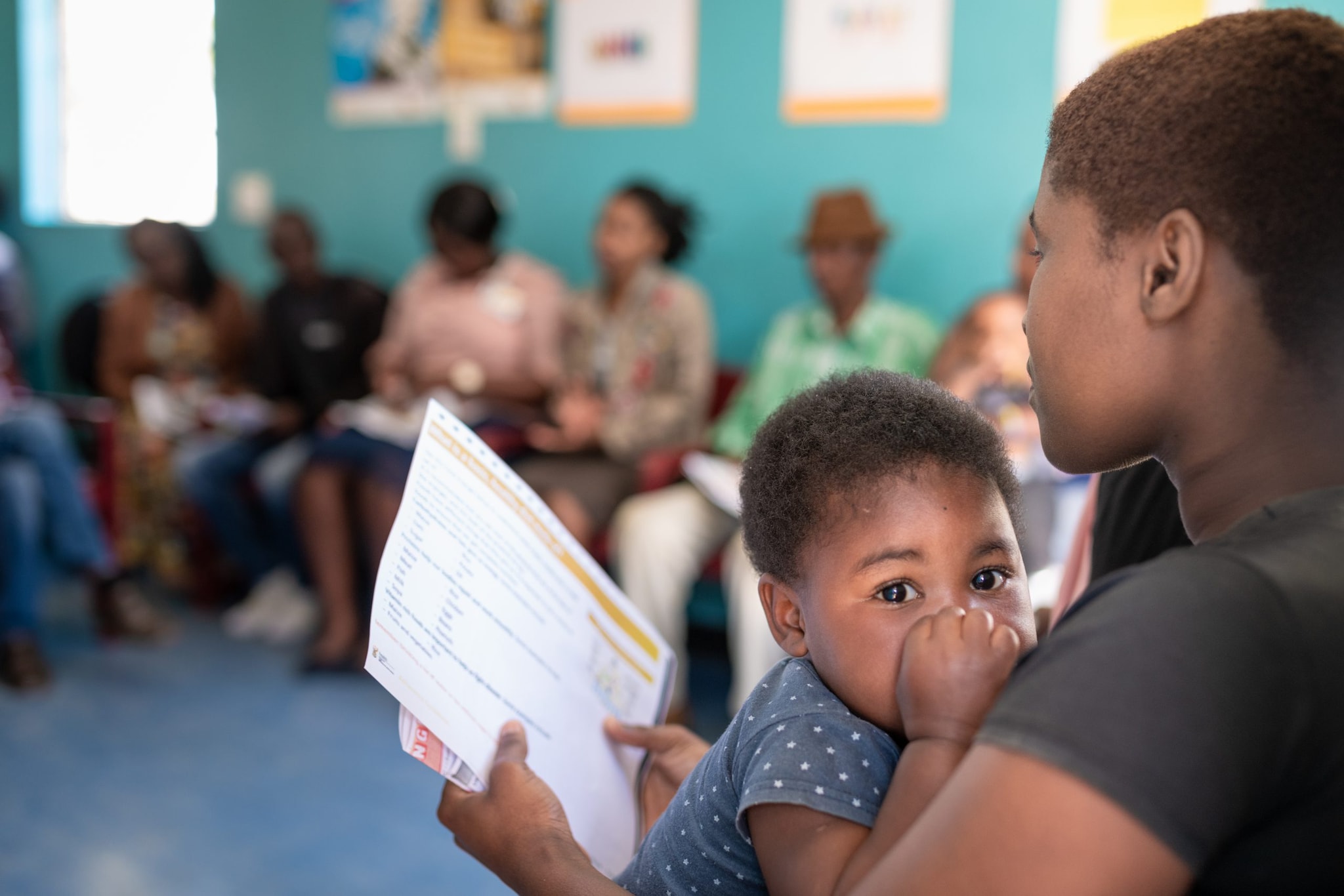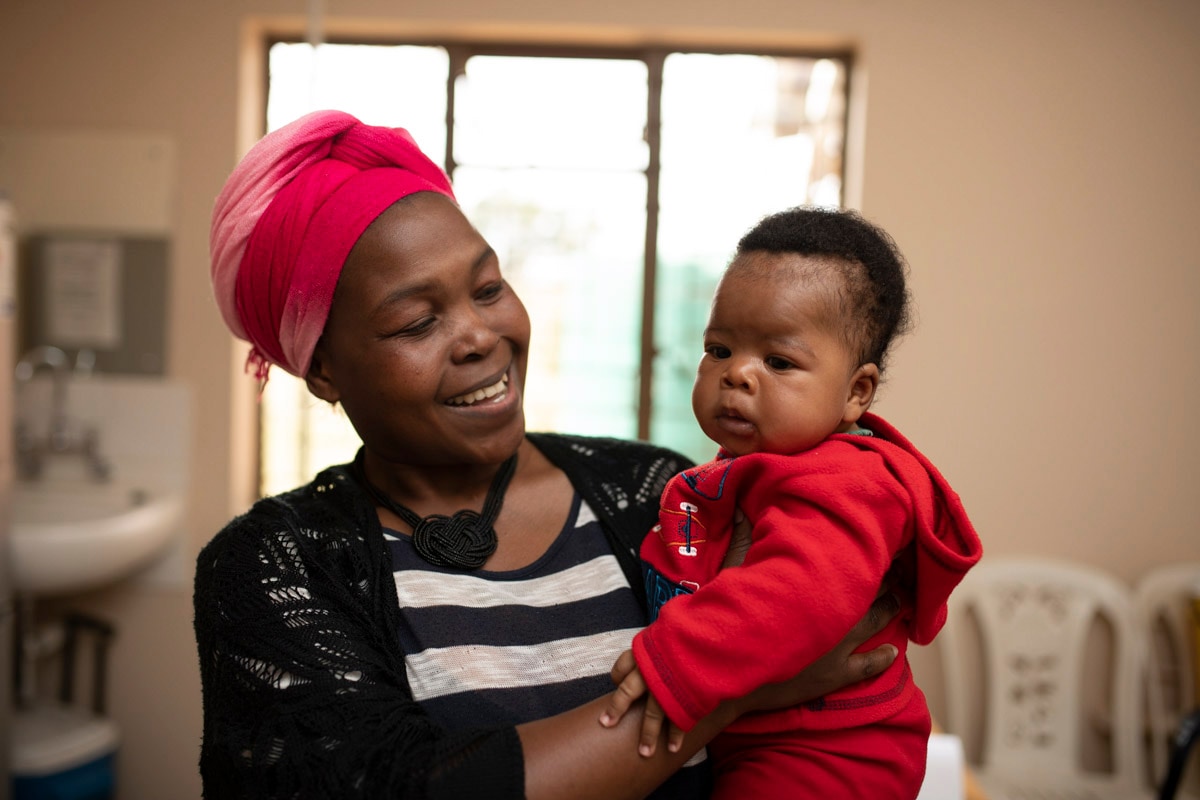Uganda Significantly Reduces Rates of Mother-to-child Transmission of HIV With CDC Support

A recent report by the Uganda Ministry of Health shows a significant reduction in the rates of mother-to-child transmission of HIV in the country from over 20 percent in 2000 to 2.8 percent in 2021. With support from the U.S. President’s Emergency Plan for AIDS Relief (PEPFAR), CDC has supported Ugandan mothers since 2003 to decrease rates of HIV transmission to their children.
Although mother-to-child transmission of HIV is preventable through antiretroviral treatment during pregnancy and postpartum, there were more than 150,000 new infections in children (0 – 14 years) worldwide in 2020. The UNAIDS 2021 Spectrum estimates indicate there were 5,500 new childhood HIV infections in Uganda due to mother-to-child transmission, with half of those infections occurring among infants born to mothers who stopped HIV treatment during pregnancy and breastfeeding. According to the 2018–2023 Ugandan National Elimination Plan II, mother-to-child transmission of HIV accounts for 18 percent of all new infections in Uganda and is the primary source of infections among children.
For a woman living with HIV, achieving viral load suppression through effective HIV treatment virtually eliminates the possibility of transmitting HIV to her child. An impact evaluation (IE) study, conducted by the Uganda Ministry of Health with implementation by CDC’s partner Rakai Health Sciences Program (RHSP), assessed the impact of programs geared toward prevention of mother-to-child transmission (PMTCT) of HIV. The study showed a significant reduction in rates of mother-to-child transmission in Uganda over the 20 years of support from CDC and PEPFAR implementing partners.
“Two decades ago, 30 out of 100 mothers delivered babies who are HIV positive. Today, we get only 3 out of 100 deliveries with HIV. This is excellent progress for us as a country,” Uganda’s Minister of Health Dr. Jane Ruth Aceng said, during the impact evaluation’s dissemination held on May 31, 2022. Recognizing PEPFAR and CDC support, Aceng added, “These gains are attributed to increased access to HIV services integrated with maternal and child health services across all levels of care.”
Findings Indicate Progress and Remaining Challenges
To evaluate the impact of prevention of mother-to-child transmission programs in Uganda, PEPFAR provided $3.25 million through CDC to conduct the IE from 2017 to 2019. The IE assessed key indicators, including HIV transmission rates, rates of new HIV infections among mothers during pregnancy and the breastfeeding period, and infant death rates.

Highlights of PMTCT IE
- The overall mother-to-child transmission rate at 18 months post-partum was 2.8 percent, which is below the national goal of 5 percent.
- Infants born to younger mothers had higher rates of HIV infection, with 3.7 percent of infants of mothers aged 15–24 having HIV compared to 1.4 percent among those born to mothers 25 years and older.
- Mothers on HIV treatment throughout pregnancy and breastfeeding had significantly lower risk of HIV transmission to their infants.
Continued US Government Support for an HIV-Free Generation in Uganda
Aligned with global targets and Uganda’s strategic vision, PEPFAR’s true definition of success is zero transmission of HIV from mother to child. “The IE’s findings give us hope that an HIV-free generation is within reach in Uganda. However, it also highlights what we must do to achieve and sustain the important goal of eliminating mother-to-child transmission of HIV,” says Dr. Phoebe Namukanja, CDC-Uganda’s PMTCT team lead.
With support from PEPFAR, CDC continues to work with implementing partners to eliminate mother-to-child transmission of HIV in Uganda. PEPFAR’s PMTCT efforts in Uganda are focused along four key areas including: prevention of HIV in women including those of reproductive age; preventing unplanned pregnancies among women living with HIV; preventing mother-to-child HIV infection; and treating women living with HIV to ensure they as well as their children and families remain healthy.
CDC’s Role in Preventing Mother-to-Child Transmission of HIV in Uganda
CDC is a significant contributor to the country’s PEPFAR program efforts of identifying pregnant and breastfeeding women who are living with HIV, immediately enrolling them in treatment, and supporting them to achieve viral suppression—a marker of treatment success, that also helps them to minimize transmission of the virus to their babies through pregnancy, childbirth, and the breastfeeding period. As of March 2022, CDC supports HIV treatment for over 700,000 Ugandans living with HIV. This includes 19, 875 pregnant and breastfeeding women, which represents 99% PMTCT ART coverage among those identified with HIV infection. With new, more effective treatment, as of March 2022, the early (0–2 months) mother-to-child transmission rate at CDC-supported PMTCT facilities dropped to 1.6 percent from 3.2 percent at the end of September 2017 (FY17Q4).
“We are pleased to see the positive impact of our efforts in reducing the rates of mother-to-child transmission of HIV in Uganda,” said Dr. Lisa Nelson, CDC-Uganda country director. “We know much work remains to eliminate mother-to-child transmission and we are committed to the task. This includes direct HIV prevention services as well as layered services that financially empower adolescent girls and young women, such as the DREAMS program, support to orphans and vulnerable children, and interventions that reduce stigma and gender-based violence.”